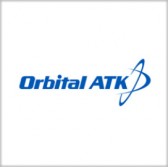 On March 29th, Orbital ATK tested a 50-lb. warhead designed for hypersonic weapons that was partially built from 3D-printed components, Defense News reported. The test assessed what effects the warhead’s fragmentation had on different targets.
On March 29th, Orbital ATK tested a 50-lb. warhead designed for hypersonic weapons that was partially built from 3D-printed components, Defense News reported. The test assessed what effects the warhead’s fragmentation had on different targets.
Hypersonic weapons are those that can surpass Mach 5 when traveling, five times faster than the speed of sound.
Doug Truitt, program manager for warhead development, said the warhead took 60 days to go from conception to test, with the team starting the warhead’s design in February. He says the use of 3D printing reduced, at minimum, a month and half of manufacturing time. Three out of five of the warhead’s major components were constructed using additive manufacturing.
The warhead’s test coincides with the Defense Department‘s new push for hypersonic development as it looks to combat potential threats from Russia and China, who have both been conducting extensive tests of hypersonic weapons. However, a key difference lies in their approach to such weapons, Defense News noted, with the U.S. aiming for near-pinpoint accuracy, or the ability to hit within a few meters of a target. Russia and China are said to not share that goal.
Another key difference lies in terms of capabilities. The U.S. tested a hypersonic weapon able to travel approximately 4,000 km, according to James Acton, physicist and co-director of the Carnegie Institute’s Nuclear Policy Program, while China has tested boost-glide weapons only at 2,000 km. However, he warns Russia has signaled it would deploy non-nuclear capable warheads on hypersonic weapons, which would allow it to threaten targets in Europe and, possibly, the continental U.S. Previously, it could have only destroyed such targets by using nuclear weapons.
In 2019, DARPA, NASA and the DoD as a whole will begin national hypersonics development initiatives reported to cost hundreds of millions. To that end, DARPA has increased its budget for hypersonic weapons for the next two years, and plans to start testing and flying such systems starting in 2019. The agency’s programs include the Hypersonic Air-Breathing Weapon Concept and the Tactical Boost Glide.Â
The U.S. Army, Navy and Air Force are each exploring hypersonic capabilities, with development at various stages.




